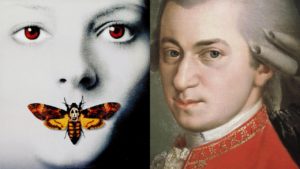
Opera Meets Film: How ‘Die Zauberflöte’ Excerpt Heightens Dread in ‘The Silence of the Lambs’
By David Salazar“Opera Meets Film” is a feature dedicated to exploring the way that opera has been employed in cinema. We will select a section or a film in its entirety, highlighting the impact that utilizing the operatic form or sections from an opera can alter our perception of a film that we are viewing. This week’s installment will take a look at Jonathan Demme’s masterpiece “The Silence of the Lambs.”
No one is safe in the Oscar-winning “The Silence of the Lambs.” The serial killer Buffalo Bill is on the loose while the brilliant Hannibal Lector toys with the minds of those around him. Meanwhile, the heroine, Clarice Starling is trying to prove herself in a world where she is looked down upon for being a woman.
Safety doesn’t seem like it will come magically for anyone, which is what happens at many junctures in Mozart’s “Die Zauberflöte,” where mythic instruments have a power to simply push away impending doom. Most famously, Papageno’s Glockenspiel saves him and Pamina from impending doom.
This famed melody makes a brief but effective cameo as Demme’s thriller ramps up to its suspenseful climax. But instead of creating hope of safety, it adds to the sense of dread.
Clarice is in the home of Buffalo Bill’s first victim and enters her bedroom to see if she might find any clue that could help her find Bill’s whereabouts. She happens upon a small musicbox which she opens up. It starts to play the famed Glockenspiel theme in a slower tempo.
The melody’s impact is striking, generating dissonance in a number of ways. It’s brighter texture, both aurally and in the substance of the melody itself, grates against the darker imagery and emotion of the film. It feels foreign to the general soundscape of the film, and that counterpoint alone adds tension. It brings incredible attention to itself through this dissonance, but in doing so, it adds another element to the suspense.
Furthermore, as Clarice explores the box further, the pitch starts to wobble and the music box starts to slowdown, an audio cue that something is out of place of the listener.
Nothing Demme does is without clear intention and the choice of music will undoubtedly add to the suspense. A few scenes earlier, we heard Hannibal himself listen to some classical music right as he murdered a few officers. As a viewer, the sudden appearance of another piece of classical music (these are the only two), immediately creates an association with the more famous murderer. The fact that we don’t know where he is at that moment and what he might do only adds to the sudden fear of his popping up and harming Clarice in her vulnerable state.
It’s also worth noting that Demme is no stranger to using opera in his films; his other famed masterwork, “Philadelphia,” centered on the use of the artform.


